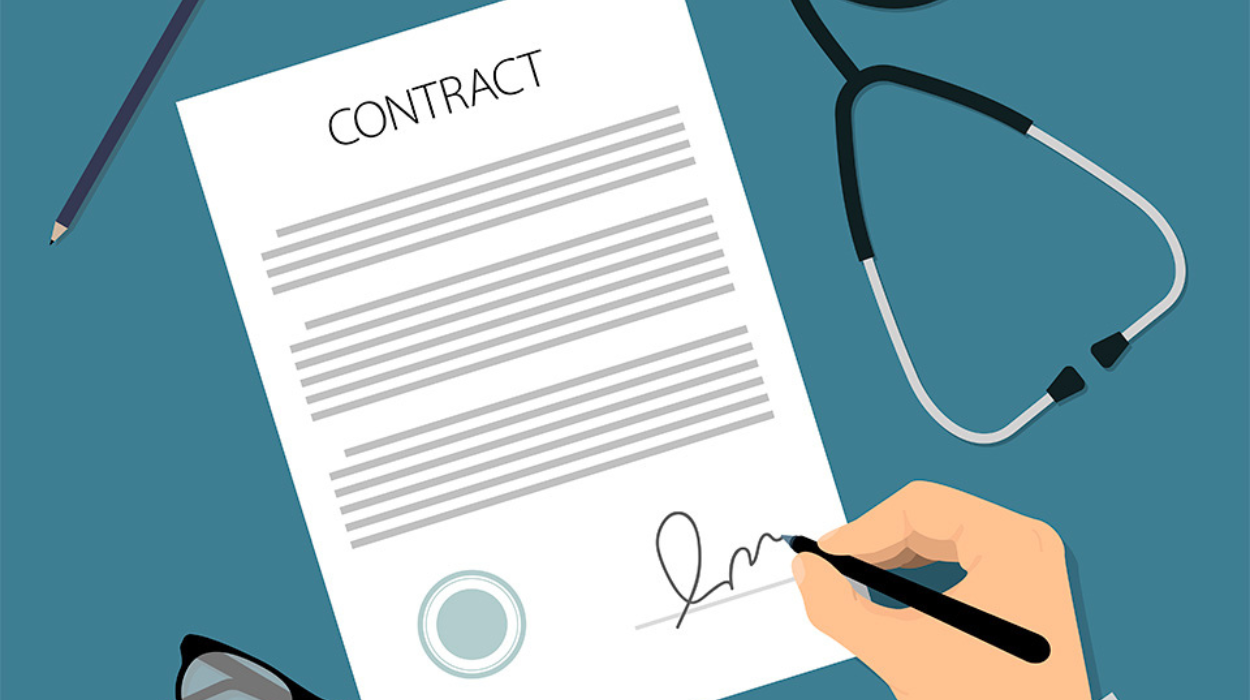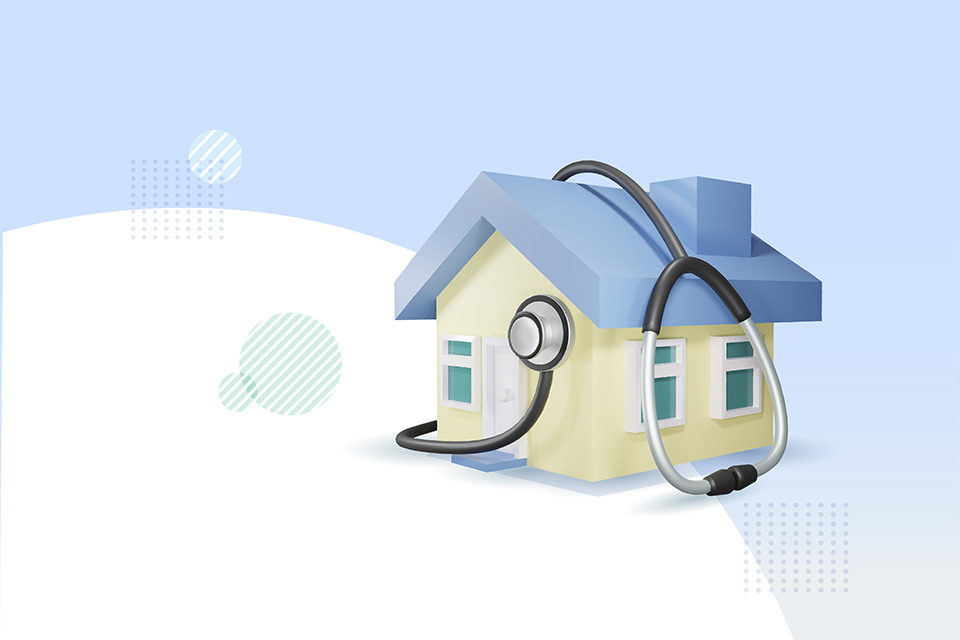Career resources content posted on NEJM CareerCenter is produced by freelance health care writers as an advertising service of NEJM Group, a division of the Massachusetts Medical Society and should not be construed as coming from, or representing the views of, the New England Journal of Medicine, NEJM Group, or the Massachusetts Medical Society
Just when organizations were formally recognizing that many of their physicians were seriously struggling with burnout and had started to seek remedies to address the endemic problem, the pandemic hit. The timing could not have been worse, many experts on physician burnout agree, and yet, for the most part, the physician workforce navigated the added stressors of COVID-19 both admirably and competently. Physicians worked in highly functioning teams to save lives, mitigate the virus’ impact on patients, and offer the highest standard of care possible under the circumstances. Many physicians also helped their organizations chart a “survival path” to navigate the operational crises the pandemic unleashed.
Organizations that employ physicians, having witnessed the steep toll that the pandemic on top of burnout took, are understandably concerned about the state of their workforce. Many organizations are actively seeking, developing, and trying out wellbeing improvement programs to help bolster physicians and other clinicians. Health care leaders are recognizing, too, that physicians are hardly exempt from “the great resignation” our country is experiencing among workers.
Numerous approaches are being piloted or implemented, with varying degrees of success. These range from informal offerings such as hospital “wellness wagons” delivering a combination of snacks and cheering-up support and wellbeing days off for residents and fellows, to more structured programs. Examples of formal offerings include buddy systems mimicking military-type “battle buddy” practices, mental-health check-in offerings, and physician coaching resources.
The latter, when provided with anonymity guaranteed, appear to be somewhat effective for those who access them, according to Eileen Barrett, MD, MPH, a hospitalist and educator who formerly directed graduate wellness initiatives at the University of New Mexico (UNM). “Many physicians who have received coaching have benefited, and some organizations have been able to demonstrate real outcomes,” said Dr. Barrett, who now practices with the Indian Health Service and has published on advocated for national clinician wellbeing improvement strategies. She said that UNM’s mental health check-ins, a “renewable” offering, were also relatively well received — 78 of the 109 physicians who booked appointments when the program launched kept those appointments.
Some organizations, such as Intermountain Healthcare in Salt Lake City, Utah, are trying several approaches simultaneously — developing a physician and advanced practice provider (APP) wellbeing center and dedicated portal and scheduling wellness-focused grand rounds and separate leadership rounds to celebrate successes and learn what clinicians are struggling with in their work. Intermountain also provides a range of peer-support forums and options for connecting caregivers, aimed at offering a confidential forum for sharing emotions.
“My task is to develop resources and learn from others around the country — and at Intermountain, we’re all working on this together to determine what works and what’s not helpful,” said Anne Pendo, MD, an internist who is senior medical director of Provider Experience and Wellbeing at Intermountain. “What we all recognize, I think, is that we as a profession weren’t well before the pandemic,” she said, and that the pandemic further eroded physician resiliency. “Now we have an opportunity to try to discover ways to improve wellbeing and then implement them.”
Peer-support programs taking hold
At Intermountain, of the initiatives piloted to date, the peer-support offerings have been among the most successful in terms of uptake. Peer supporters have trained nearly 100 physicians to serve in the role and approximately 300 physicians and clinicians have participated. “I think it’s important to position this as ‘I can be a helper’ if you want physicians to get involved, and to ensure you offer a safe space for sharing feelings — something physicians have historically struggled with,” she said, because of fear they’ll be perceived as weak.
Researchers and physicians involved in developing wellness-support programs and resources are finding that although it’s challenging to figure out exactly what physicians do need in support, there’s growing consensus on what physicians don’t want: Tips and recommendations for improving their personal resilience. In other words, Dr. Barrett said, “Physicians don’t want to hear about another yoga class or meditation practice.”
Heather Farley, MD, chief wellness officer at ChristianaCare in Delaware, which rolled out the “wellbeing wagon” described earlier and created a Center for Worklife Wellbeing, concurred with Dr. Barrett. “What doesn’t work is focusing too much on the personal minutiae, such as sleep hygiene. Whatever you offer has to support physicians “in their work environment,” said Dr. Farley, an emergency medicine physician. Like Intermountain, ChristianaCare has seen a gradual but steady utilization uptake of peer-support offerings. “We’re shifting away from the culture of ‘shame and blame’ to one that says, ‘It’s OK not to be OK,’ and to reach out if you need help,” she said.
At the University of Minnesota, which created the buddy system a few months into the pandemic and rolled out the program in a matter of weeks, the model was predicated on the recognition that Dr. Farley cites: everyone needs help sometimes and it’s important to know that someone has your back and is willing to help. In the university’s program, modeled in part on both the military-battlefield scenario and observations an anesthesiologist made in the operating room during the early weeks of the pandemic, when staff members were becoming more nervous, buddies are “paired” somewhat strategically. Ideally, they’re close in age and career length and experience, so that they can both recognize and understand the stressors their buddy is experiencing — and identify when that buddy needs some extra support.
“We decided that the battle-buddy system was a brilliant idea and decided to give it a decent trial,” said Cristina Sophia Albott, MD, who heads the university’s division of adult mental health. “We wrote the protocol in one week, started the program in two weeks, and rolled it out across the entire medical school.” By July 2020, more than 3,000 health care personal, primarily physicians and nurses, had adopted and established the model.
Around the same time, the University of Minnesota implemented “listening groups” and established mental-health consultation services in each clinical department. The latter offering, however, despite the appointments being structured a confidential, wasn’t as well received as the buddy program. “Unfortunately, few physicians availed themselves of that offers,” she said.
On a positive note, even though the worst of the pandemic crises appear to have largely receded at the university, some departments have decided to continue with the buddy program, Dr. Albott reported. Although there’s been considerable variation in how individual departments set up or later retooled their buddy programs, the initiative’s early and ongoing success is a clear indicator of the offering’s value, she added.
Desperately seeking on-the-ground support and remedies
What physicians do want in the way of support from their organizations, Dr. Barrett and others interviewed for this article agreed, is operational load-lightening, however that can be achieved and institutionalized. Offerings such as onsite childcare and schedule flexibility to address family needs rank high on the wish list for many physicians, and there’s a growing consensus that the electronic health record (EHR) persists as a chief source of physician frustration and stress, despite years of organizations’ attempts to ameliorate the problem.
“What does appear to work is providing physicians protected time for EHR training or having dedicated information technology (IT) support for dealing with EHR-related issues,” Dr. Barrett said, or adding scribes to offload the bulk of EHR-data entry processes. In similar fashion, physicians would appreciate their institutions removing the burden of treatment prior-authorization management. And she noted that the incredibly complex and inordinately inefficient processes related to physician credentialing are ripe for fixing, as they’re unnecessarily burdensome for physicians. “If credentialing were centralized, at least for Medicare, that would go a long way in reducing the burden. Most people think that the system, as it stands, doesn’t really make anyone safer,” Dr. Barrett said.
Health care organizations, concerned about both their physicians’ wellbeing and their facilities’ ability to maintain adequate staffing levels in a time when many physicians are deciding to leave jobs where they don’t feel well enough supported, are taking note. They’re actively trying to figure out what physicians want and need to care for patients with fewer frustrations.
Physician professional organizations are also stepping in to identify what’s needed now in institutional supports to help physicians mitigate burnout and regain resiliency. The American College of Physicians’ Patients Before Paperwork initiative, for example, has identified the most burdensome tasks and regulatory requirements that internists face and offered policy recommendations for reducing associated workload. The American Medical Association has also developed a multifaceted initiative to provide guidance and targeted solutions to health care organizations for many of the problems that threaten physician wellbeing.
In an article published in the Annals of Internal Medicine in September 2021, Dr. Barrett and her co-authors proposed a series of steps that organizations might take to reduce clinician burnout, keep physicians in the workforce as the health system continues to navigate COVID-19, and simply make physicians’ practice lives more tolerable. In addition to the COVID-related recommendations for improving physician safety and providing practical support as needed to address system-capacity constraints, the authors urged organizations to do the following:[1]
- Help ensure more flexible scheduling for physicians who are parents or care for aging parents.
- Reduce, eradicate, or reassign administrative tasks and meetings that aren’t mission critical and haven’t delivered improved patient outcomes.
- Provide no-cost and truly confidential mental-health support services — and also truly encourage physicians to use their available vacation and professional development time to nurture a healthier workplace. At the same time, organizations should update credentialing and employment applications to remove unnecessary questions related to mental and physical health diagnoses, to reduce the associated stigma.
Dr. Barrett offers another recommendation to employer organizations. “If you offer resources that might support or improve physician wellbeing, make sure your physicians know about them. Physicians are so stretched and busy that they might not know what’s available,” she said.
Tips for structuring physician-wellness support offerings
All sources who participated in this article offered guidance for organizations trying to provide resources that might help improve physician wellbeing. Here are a few:
- Understand that each environment is different, which means that the problems and needs might vary widely from one health care organization to another. To develop appropriate solutions and resources, ensure that physicians are directly involved in creating them.
- Avoid focusing resources on individual-physician resilience and instead focus on system approaches that might have the added benefit of helping physicians support one another and reduce unnecessary workload. Keep in mind that some physicians have an innate distrust of “corporate-sponsored” initiatives that appear to be focused on the bottom line.
- Provide a safe forum for physicians to recommend institutional approaches that mitigate the burdens that contribute to burnout and also make their overall work lives more realistically manageable.
- If you try a wellness initiative and it doesn’t produce results that are valuable to physicians, be ready and willing to abandon it. Then be prepared pilot something else — quickly.
[1] Barrett E, Hingle ST, Smith CD, Moyer DV. Getting Through COVID-19: Keeping Clinicians in the Workforce. Ann Intern Med. 2021 Nov;174(11):1614–1615. doi: 10.7326/M21-3381. Epub 2021 Sep 28. PMID: 34570597; PMCID: PMC8500335.






